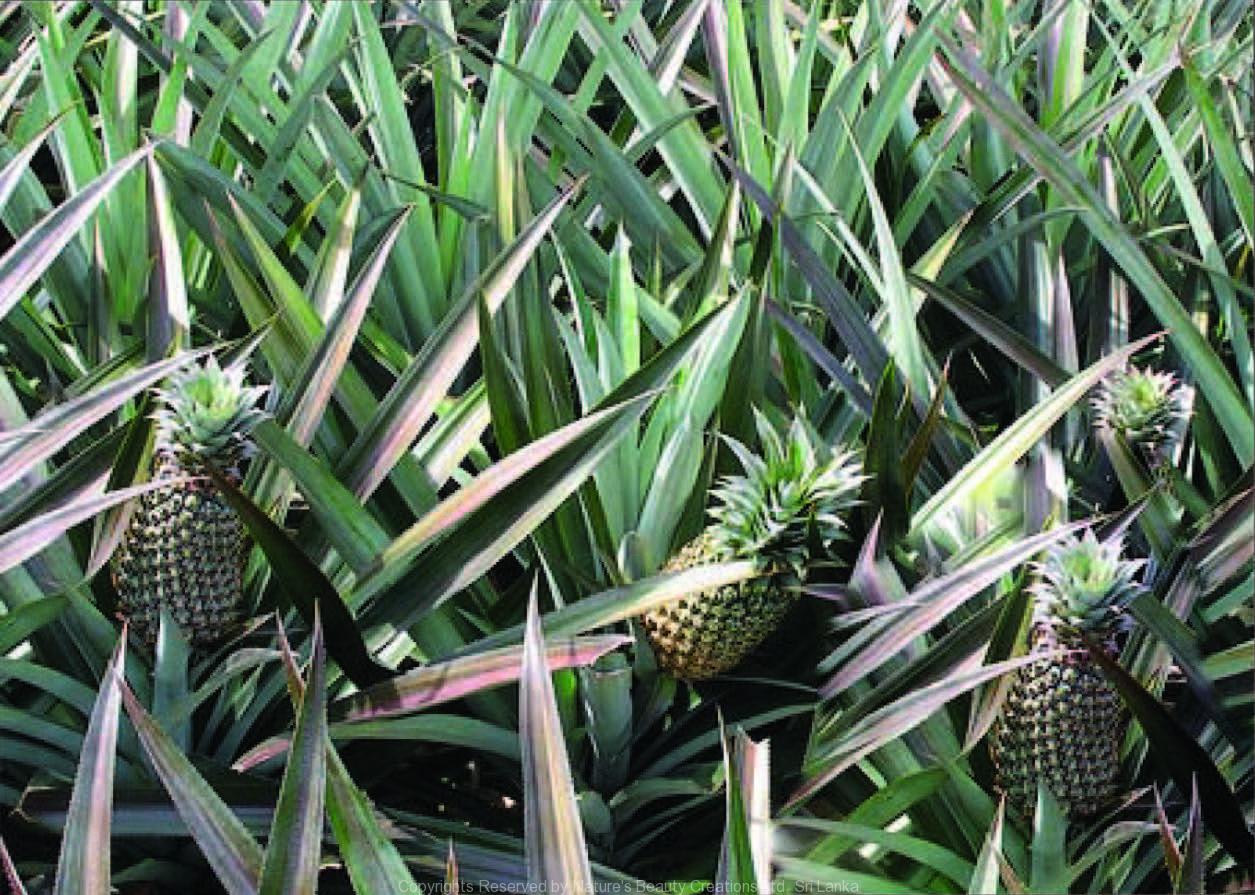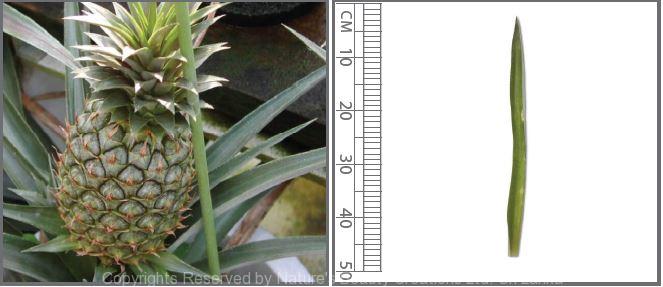

Traditional Knowledge
Useful plant parts :
Leaf and young fruit
Uses in traditional medicine :
- Juice of leaves is used in high doses as a purgative
- Infusion of leaves is diuretic, diaphoretic, aperient, refrigerant and digestive
- Juice of young fruits is a vermifuge and used in violent purging, flatulence, distension of abdomen, uterine contractions, jaundice and diarrhoea
- Oral intake of young fruits acts as an abortifacient
Scientific Research
Chemical constituents:
Proteolytic enzyme mixture: bromelain, lactone: 4-hydroxy-2, 5-dimethyl-3( 2H )-furanone butyric acid esters and other esters, phenolic compounds: S-sinapyl-L-cysteine, N-L-γ-glutamyl-S-sinapyl-L-cysteine, and S-sinapylglutathione from fruits
Bioactivity :
Bromelain: interferes with growth of malignant cells, inhibits platelet aggregation, fibrinolytic, anti-inflammatory, skin debridement properties; ethanol extract of leaves: antidiabetic, antidyslipidaemic, antioxidative
Clinical:
Bromelain may be effective in ameliorating physical symptoms and improving general well-being in healthy adults suffering from mild knee pain
Note :
Ripe fruits are edible
References : Gläser, D. and Hilberg, T., (2006), The influence of bromelain on platelet count and platelet activity in vitro, Platelets, 17(1), 37-41. Hemavathi, A. B. et al., (2007), Reverse micellar extraction of bromelain from Ananas comosus L. Merryl, J Chem Technol Biotechnol, 82(11), 985-992. Takeoka, G. et al., (1989), Volatile Constituents of Pineapple (Ananas Comosus [L.] Merr.), ACS Symposium Series, 388(18), 223-237. Taussig, S. J. et al., (1988), Bromelain, the enzyme complex of pineapple (Ananascomosus) and its clinical application. An update, Journal of Ethnopharmacology, 22(2), 191-203. Tokitomo, Y. et al., (2005), Odor-Active Constituents in Fresh Pineapple (Ananas comosus [L.] Merr.) by Quantitative and Sensory Evaluation, Bioscience, Biotechnology, and Biochemistry, 69(7), 1323-1330. Walker, A. F. et al., (2002), Bromelain reduces mild acute knee pain and improves well-being in a dose-dependent fashion in an open study of otherwise healthy adults, Phytomedicine, 9(8), 681-686. Wen, L. et al., (1997), Characterization of Sinapyl Derivatives in Pineapple (Ananas comosus[L.] Merill) Juice, Journal of Agricultural and Food Chemistry, 47(3), 850-853. Xie, W. et al., (2005), The Effects of Ananas comosus L. Leaves on Diabetic-Dyslipidemic Rats Induced by Alloxan and a High-Fat/High- Cholesterol Diet, The American Journal of Chinese Medicine, 33(1), 95-105.
Copyrights Reserved By
Natures Beauty Creations



